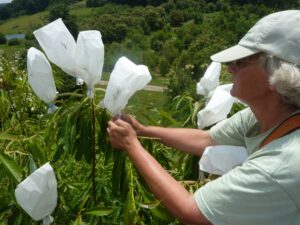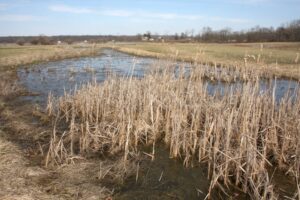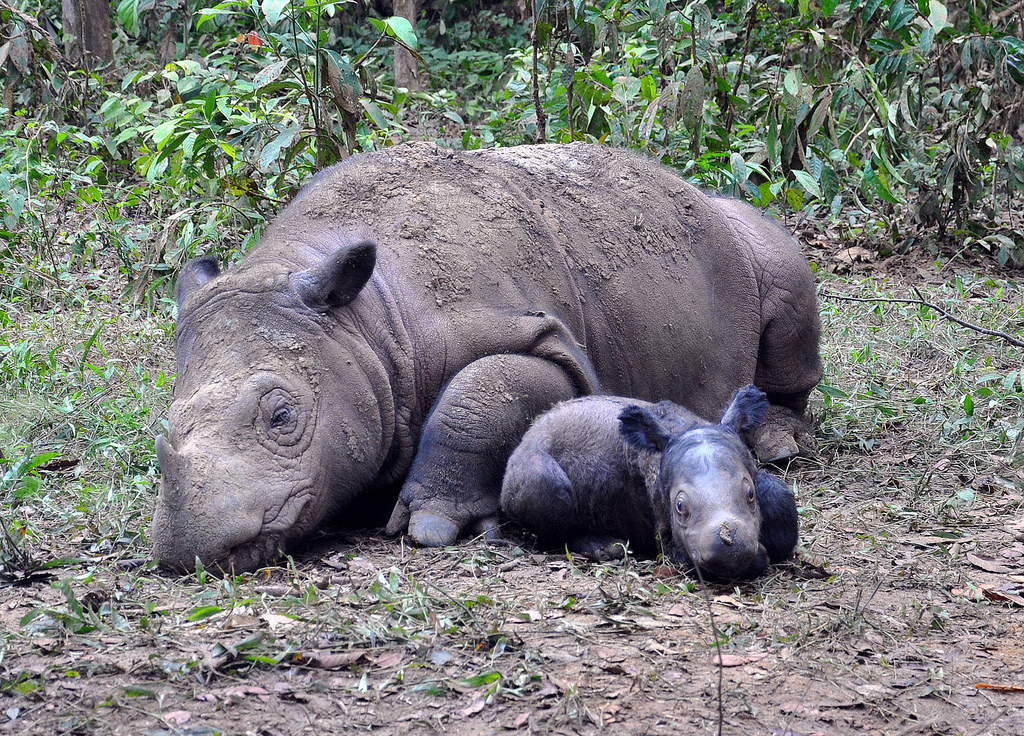Saving Animals in the Wild: The Zoo’s Top Field Conservation Efforts of 2014
Happy New Year! As we look back on 2014, let’s reflect on some of the Zoo’s significant contributions to wildlife conservation in the field this past year:

Helping Lions Thrive in Kenya’s South Rift Valley
Since 2011, the Zoo has partnered with the African Conservation Centre and the South Rift Association of Land Owners in Kenya on the Rebuilding the Pride program. This community-based conservation program combines Maasai tradition and modern technology to restore a healthy lion population while reducing the loss of livestock to lions in Kenya’s South Rift Valley. Once down to a low of about 10 known lions in the area, the population has grown to more than 65 lions in 2014. This past April, a lioness named Nasha gave birth to another litter, this one containing three cubs. That the population is growing in the South Rift Valley at a time when lion populations are severely declining across the continent overall is significant and a testament to program’s community-based approach.

A Giant Step Forward for Sumatran Rhinos in the Wild
The Zoo has been committed to saving the Sumatran rhino for 25 years. Despite the devastating blow of the loss of our female rhino, Suci, back in March, the Zoo continues to work to conserve and protect the species. In 2014, a Debt-for-Nature deal was struck between the United States and Indonesia. In return for lowering the debt Indonesia owes to the United States, it will commit nearly $12 million towards the conservation and protection of critically endangered species, including the Sumatran rhino, and their habitats over the next seven years. The debt swap was made possible by a contribution of about $11.2 million from the U.S. government under the Tropical Forest Conservation Act (first introduced by Ohio Senator Rob Portman in 1998) and $560,000 from other organizations funneled through Conservation International. The Zoo was proud to help secure this funding by pledging a major gift.

Saving American Chestnut Trees with Cryopreserved Pollen
The magnificent American chestnut tree once ranged over the entire Eastern United States, but was almost entirely obliterated by blight by the mid-twentieth century. Over the years, breeders have been working to develop a resistant tree, and one of their key tools is pollen. American chestnut pollen rapidly declines in viability so maintaining important lines of pollen from year to year is difficult. In 1993, pollen was cryopreserved (frozen) in liquid nitrogen at the Zoo’s Center for Conservation and Research of Endangered Wildlife (CREW). Last spring, some of that pollen was removed and used to successfully pollinate trees at the American Chestnut Foundation’s farm in Virginia. Paternity testing will be done at CREW this winter, but the indications are very good that cryopreservation can indeed maintain pollen viability for at least 20 years—a fact that should provide a new tool to those working to save this majestic American tree.

Committing to Kea Conservation in New Zealand
Over the past few years, the Zoo has supported the Kea Conservation Trust’s (KCT) efforts to protect and study New Zealand’s mountain parrot, the kea, in the wild. In 2014, the Zoo stepped up its efforts with a commitment to support the Kea-Community Conflict Response Plan, a multi-year proactive community-focused conflict response and resolution program. Funds from the Zoo support a key personnel position, the Community Volunteers Coordinator, who can respond to conflict situations that arise. Funds will also enable KCT staff to enhance their conflict resolution skills by participating in a Human-Wildlife Conflict Collaboration Workshop. Additionally, Zoo aviculturists will join the KCT team for kea nest monitoring and field work over the next couple of years.

Pledging Support for Panthera’s Tigers Forever Initiative
The Zoo is committed to ensuring the survival of endangered tigers of which there are fewer than 3,200 remaining in the wild. In 2014, we have pledged multi-year support of the tiger conservation efforts of Panthera, the leading international wild cat conservation organization with a mission to ensure the future of wild cats through scientific leadership and global conservation action. To ensure the tiger’s survival, Panthera works across Asia with numerous partners to end the poaching of tigers for the illegal wildlife trade, prevent tiger deaths due to conflict with humans and livestock, and protect tiger prey species and habitat. Through their program, Tigers Forever, Panthera works to protect and secure key tiger populations and ensure connectivity between sites so that tigers can live long into the future.

Restoring Native Wetlands and Wildlife in Mason, Ohio
In 1995, a 529-acre farm in Mason, Ohio, now called the EcOhio Farm, was willed to the Zoo with the guideline that it could never be developed unless it is to further the mission of the Zoo. Over the past few years, the Zoo has worked to restore 30 of the farm’s acres to its original state of a wet sedge meadow, providing refuge for a diversity of native wildlife. Since restoration began in 2012, drainage tiles have been removed and more than 200 native plant species and thousands of trees have been planted on the site. The wetland is returning to its natural state very quickly. Already, it has attracted more than 135 native bird species, including bald eagles, bobolinks and killdeer, which would never have been there when it was a cornfield. Though not currently open to the public, walking trails and a small education center may be implemented in the future to provide opportunities to explore the wetland.

Strengthening our Support for Gorillas in the Republic of Congo
Over the past 20 years, the Zoo has partnered with the Nouabale Ndoki Project (NNP) in the Republic of Congo, which includes the Mbeli Bai Study, the longest running study of the critically endangered western lowland gorilla. The Zoo also supports work in an area called Mondika where gorillas are habituated for up close research and ecotourism. Habituation is a process through which the wild gorillas become accustomed to and tolerate the presence of people that enables researchers and tourists to observe them up close. The Zoo recently helped facilitate the habituation of a second group of gorillas, and entered into an agreement in 2014 to support the habituation of a third group over the next three years. Special thanks goes to Gorilla Glue, our official gorilla conservation sponsor!
All of these projects and more couldn’t happen without your support of the Zoo. Here’s to you and the Zoo making more great strides for wildlife conservation in 2015!

